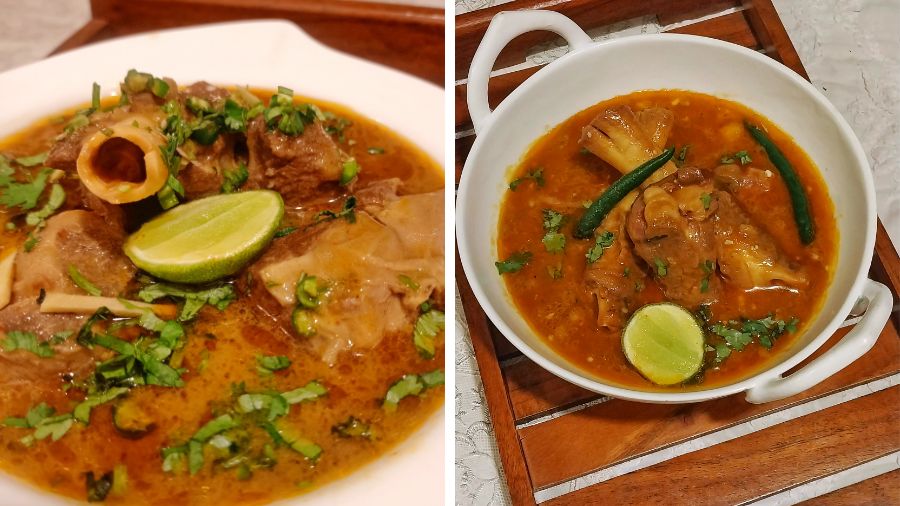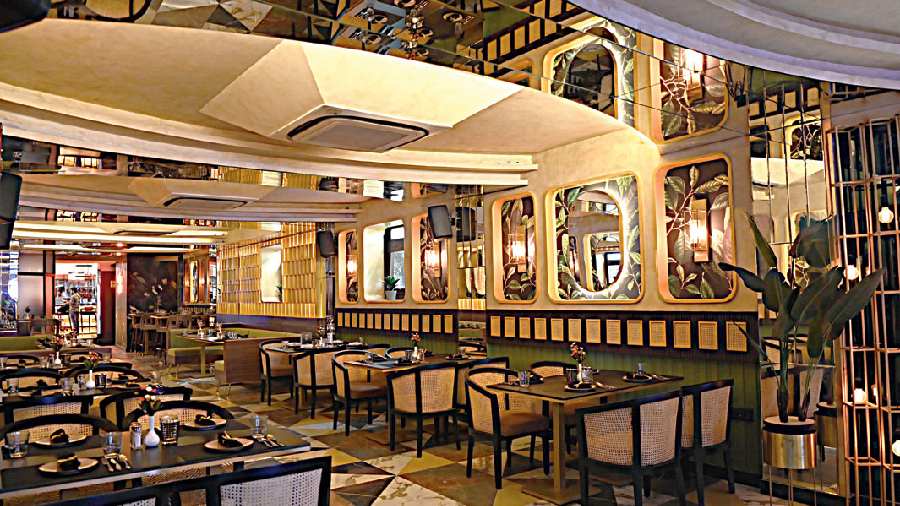Every conversation with Manzilat Fatima is steeped in culinary history, laughs and lots of anecdotes from the royal family that she comes from. Being the great great granddaughter of Nawab Wajid Ali Shah, preserving family recipes is the undertaking she has chosen, and has been doing single-handedly for more than half a decade.
With the onset of winter, My Kolkata caught up with the home chef and flagbearer of Awadhi cuisine about classics like Nihari and Paya, the latter being a new addition to her menu, and know all about what winter means to her, her personal favourites and more. Edited excerpts from the conversation...
What is your fondest winter memory?
For me, winter is about a lot of things. From sleeping late in the afternoon and playing carrom like when we were kids, to eating lots of malai with bread, paratha or even Gajar ka Halwa. We used to eat a lot of peanuts, whose shells we had to peel ourselves! Nihari is also something that I love during the winters.
Awadhi food is usually very rich and centred around different kinds of meat, what do you think is the connection between Awadhi food and winter?
The first thing that needs to be clarified is that Mughlai and Awadhi cuisines are totally different. The former is rich, usually greasy and spicy, but Awadhi food is very light on spices and very aromatic. My family tradition is centred around Awadhi food, which is from Lucknow.
In Awadhi cuisine, there are quite a few winter delicacies like Shorba, Nihari and Paya. There is a close relation between the meat dishes and winter because most of them use bones and the rich bone marrow to create the gravy. This makes it quite hearty and when one has it, it warms the body which makes it great for the cold.
On the other hand, there is Matar Pulao, Tehri Pulao and even Gajar ka Halwa, which feature winter vegetables like peas and carrots.
Nihari and Paya are two popular winter Awadhi dishes. How was your first introduction to this dish?
My first introduction to Nihari was of course from my amma, who used to make it every winter. We used to wait eagerly every year for it to be prepared at home. In Kolkata, we used to get tandoori roti from outside to have with Nihari, but in Lucknow we used to enjoy it with kulchas. Even now, Kolkata doesn’t have authentic kulcha, and it is quite a skill to prepare it. Not many karigars still make authentic kulchas and it is a skill that is fading fast.
Which is your personal favourite — Nihari or Paya?
I love Nihari more because it has slow-cooked meat. It is cooked overnight and the meat and marrow blends into the gravy very well. Paya, on the other hand, is made with trotters that have fat and tendons, making the gravy quite sticky and gelatinous.

Nihari (left) and Paya prepared by Manzilat Photos courtesy: Manzilat Fatima
Tell us about your Nihari recipe.
It’s a family recipe that I still prepare at home and for all my patrons. I leant it from my mother and it has been passed down in my family for generations. The curry is made with ginger, garlic, salt, turmeric and coriander powder. Once the meat is half cooked, my mother used to add in a potli of other spices, which gave the curry its signature aroma and taste.
Nihari is becoming quite popular now because the food scene in Kolkata has changed quite a bit. It’s no longer just a delicacy that is enjoyed only in the winter. People travelling from abroad request me to prepare it for them even during the summers!
You haven’t had Paya on your menu before, what prompted you to include it this year?
Five years back, when I started making Galawati Kebab, no other restaurants were making it the authentic way, as far as I know. I like to believe that the introduction of these classic dishes to my menu helps in keeping the traditions of these delicacies alive. That is the reason for adding Paya to my menu. I hope people try it and more places in the city start making this dish as well!
You have also included special vegetarian dishes on your menu this year — Kanchakola (unripe green banana) Shami Kebab and Matar Pulao with Tomato Chutney — can you tell us more about them?
Kanchakola Shami Kebab is a big hit with my patrons. The flavours work very well. I also make an Aenchor (raw jackfruit) Biryani and Mulo Kebab during the winter because the produce is fresh. These are all recipes that have been taught to me by Amma. I’m not an experimenter and creator when it comes to food at all. I follow my family recipes to the T.
How much time and effort does it take to make Paya and Nihari?
Both these dishes are very laborious and time consuming to make. It takes almost six hours to prepare as compared to a biryani, which can be made in three hours.

Nihari is made with fleshy bones and the signature richness of the gravy comes from the ‘nalli’, or bone marrow — a squeeze of lime and sprinkling of coriander leaves adds a fresh zest to the dish
Both these dishes are eaten usually for breakfast, what is the reason for that?
From my understanding, the relation between these dishes and winters is that people used to put on the dishes to cook overnight on their chulha and that would keep their house warm too, in the cold.
Nihari comes from Nihar-muh, which means to eat on an empty stomach. Traditionally it is served with Dal Puri and that is exactly how I serve it to my patrons as well!
Dine in at Manzilat’s at Plot-I, Phase-III Kasba Industrial Estate, Kolkata 700107, or order take-away on +91 9432913204.


